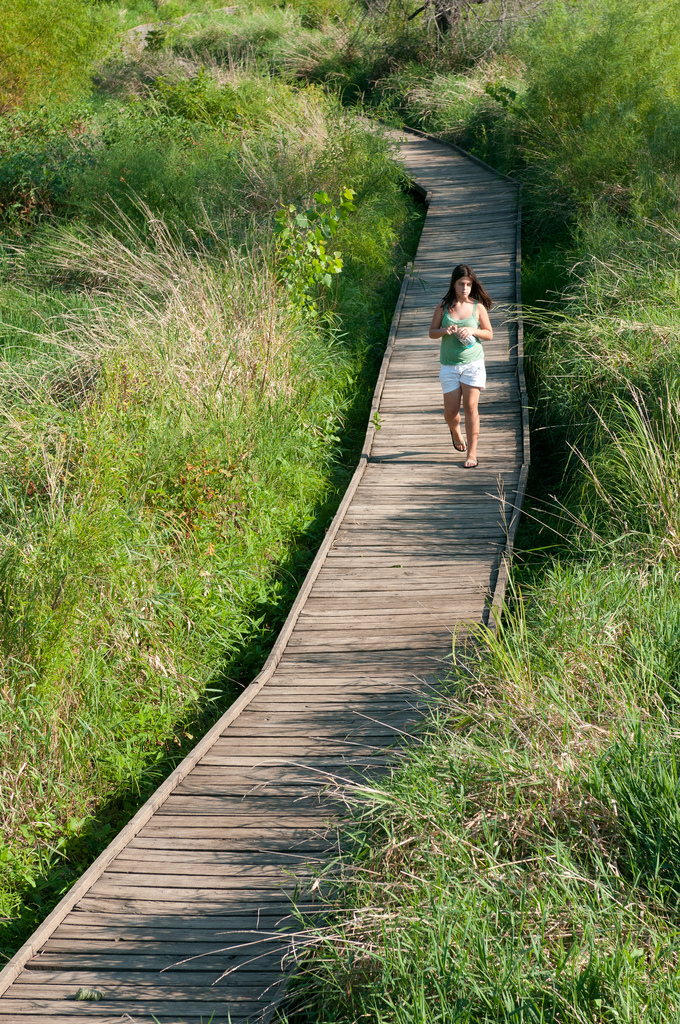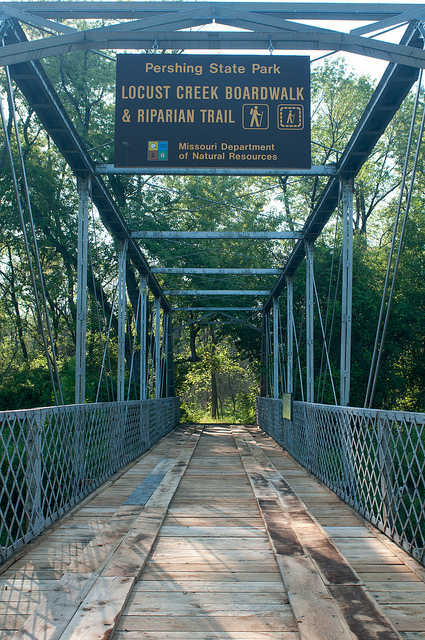at Pershing State Park
Northern Missouri's Rare Natural Jewel
 When citizens of Laclede first expressed an interest in honoring Gen. John J. Pershing, commanding general of the American Expeditionary Forces during World War I, the most suitable tribute seemed to be a park encompassing the land that Pershing loved to roam during his youth. In 1937, the state purchased the first tract of land, setting in motion the preservation of what is considered a rare natural jewel in a predominantly agricultural landscape.
When citizens of Laclede first expressed an interest in honoring Gen. John J. Pershing, commanding general of the American Expeditionary Forces during World War I, the most suitable tribute seemed to be a park encompassing the land that Pershing loved to roam during his youth. In 1937, the state purchased the first tract of land, setting in motion the preservation of what is considered a rare natural jewel in a predominantly agricultural landscape.
Pershing State Park is an excellent example of the wetland landscape once common in northern Missouri. Virtually all north Missouri rivers and streams have now been straightened and channelized, their flood plains converted to crop and pasture land. However, a portion of Locust Creek still meanders across the flood plain within the park and keeps alive the rare example of what these lands once held. Its dynamic force still shapes the landscape by forming oxbow lakes, sloughs, shrub swamps, marshes and wet prairie. Along the creek is a large bottomland forest of oak, hickory, cottonwood, sycamore and silver maple, which has been designated a Missouri natural area.
Bird-watchers can enjoy a huge variety of birds throughout the park, including great blue herons, barred owls, pileated woodpeckers, migrating songbirds, waterfowl and wintering bald eagles. On the prairie, visitors will find cordgrass, compass plant, spiderwort, blue flag iris and the rare pale green orchid. The endangered massasauga rattlesnake can be found in the park along with deer, turkey, raccoon, river otter, mink, beaver, muskrat and several species of frogs.
 The best way to explore the wetlands and view wildlife is by hiking Boardwalk and Locust Creek Riparian trails, both of which wind along Locust Creek. The exhibits along the boardwalk explain the forces that interact with one another to create and maintain the wetlands and wildlife found in the park. The boardwalk leads visitors through bottomland forest, shrub swamps, marsh and wet prairie. An observation tower overlooks the largest remaining wet prairie in north Missouri at nearly 1,000 acres.
The best way to explore the wetlands and view wildlife is by hiking Boardwalk and Locust Creek Riparian trails, both of which wind along Locust Creek. The exhibits along the boardwalk explain the forces that interact with one another to create and maintain the wetlands and wildlife found in the park. The boardwalk leads visitors through bottomland forest, shrub swamps, marsh and wet prairie. An observation tower overlooks the largest remaining wet prairie in north Missouri at nearly 1,000 acres.
Locust Creek Riparian Trail allows adventurous visitors the opportunity to backpack and camp along Locust Creek deep inside the park. This non-loop trail connects to Fountain Grove Conservation Area at the southern end of the park. Several shorter trails take visitors through a remnant savanna and near Native American burial mounds in the park.
Other activities available at the park include fishing and boating. Four small lakes provide opportunities to reel in bass, bluegill and channel catfish, and anglers can also try their hand at catching bullhead, carp and drum in Locust Creek. Canoes and boats with electric motors are allowed on the lakes, and canoes can be used on Locust Creek during various times of the year.
For those wanting to savor more of this wetland masterpiece, the park provides a shady campground with both electric and basic campsites, modern restrooms, hot showers, laundry facilities, and a sanitary dump station. If available, a park naturalist offers nature activities during the summer months.
In the day-use area, several picnic sites, an enclosed picnic shelter with kitchen facilities, and an open shelter with water and electricity are available. Also located in this area is a monument to all the mothers who gave their sons to war. Dedicated by the American War Mothers of Missouri in 1940, the marble statue is a fitting tribute to the memory of those who gave sons to World War I and all wars. John Schlitz, an inmate in Leavenworth, Kansas, carved the statue, which was dedicated the same year the park opened.
Historians should be sure to check out not only the monument but also the park's newest feature: Locust Creek Covered Bridge. This historic bridge was built in 1868 and originally crossed Locust Creek north of U.S. Highway 36. However, channelization of the creek eventually left the bridge spanning dry land, and watershed instability threatened the bridge's structural integrity. In 2025, crews moved the bridge 5 miles south to Pershing State Park, where it once again crosses the stream for which it was named.
The proximity of historic landscapes, a 19th century century covered bridge and Pershing's boyhood home in Laclede makes this area a great place to visit for those who enjoy both history and the outdoors.






